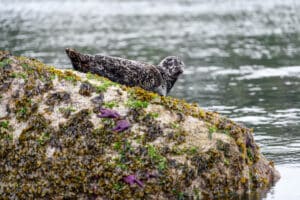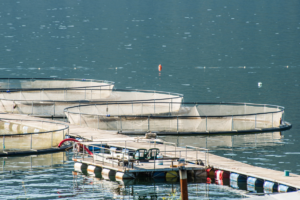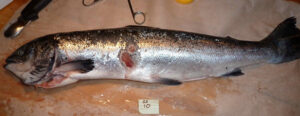Canada’s largest marine protected area is official. The designation was announced by First Nations along British Columbia’s coast and the Canadian government, in a landmark collaboration.
“Today, the joint designation demonstrates that all parties share a long-term commitment to ocean protection and biodiversity conservation and shows that a collaborative process can create meaningful measures to safeguard these unique deep-sea habitats.”
Council of the Haida Nation President Gaagwiis Jason Alsop
The new Tang.ɢ̱wan – ḥačxwiqak – Tsig̱is Marine Protected Area (TḥT MPA) spans more than 133,000 square kilometers, and aims to conserve extraordinary seafloor features and the diverse marine ecosystems they support.

The ecologically unique TḥT MPA is located approximately 150 kilometers off the west coast of Vancouver Island in the Offshore Pacific Bioregion.
The area includes over 47 seamounts—underwater mountains—and all of Canada’s confirmed hydrothermal vents. These deep-sea vents are renowned for being biological hotspots, supporting rare and unique species including Ridgeia tube worms, pycnogonid sea spiders, deep-sea Graneledone pacifica octopus, Pacific flatnose fish, and the Pacific grenadier.

Designated on June 19, 2024, this MPA was established under Canada’s Oceans Act in partnership with the Council of the Haida Nation, Nuu-chah-nulth Tribal Council, Pacheedaht First Nation, and Quatsino First Nation. The TḥT MPA’s name reflects the cultural heritage of these Indigenous groups, combining a Haida word for deep ocean, a Nuu-chah-nulth and Pacheedaht word for the deepest part of the ocean, and a Quatsino word referring to a monster of the deep. The designation was made official in 2024, following extensive consultations and collaborative planning.
The area was identified for protection in May 2017 due to its significant ecological and biological importance. In this MPA, measures will be put in place to prevent deep sea mining and bottom-contact fishing activities, to safeguard the delicate ecosystems.

In January 2023, a memorandum of understanding (MOU) was signed between the First Nations and the Canadian government, outlining a cooperative approach to the management of the TḥT MPA. This historic MOU was jointly announced at the 5th International Marine Protected Areas Congress (IMPAC5) on February 7, 2023. The agreement emphasizes the importance of shared stewardship, reflecting the spirit of reconciliation and the commitment to preserving the region’s unique marine biodiversity.
“Recognizing and respecting Indigenous governance in marine spaces is a necessary part of reconciliation and the collaborative governance and management of this marine protected area is an important next step on the path of reconciliation.”
Pacheedaht First Nation
The MPA represents a significant development in marine conservation, ensuring the protection of habitats which are crucial for supporting diverse marine life and maintaining long-term marine productivity.
To learn more, check out this article or read this overview by the DFO.




